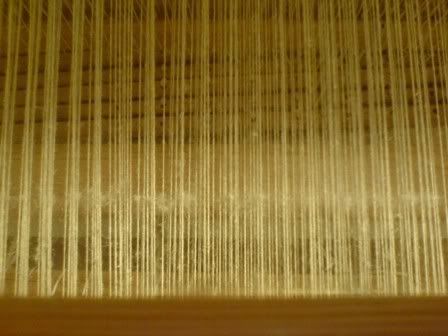
Apparently, no-one in the UK uses ironing aids. Not that I'm one to speak, it's taken me more than two years to notice this fact.
After a wonderful tip from a fellow weaver suggesting using ironing aids to limit the amount of fluffing the linen is doing, I went hunting for some last Friday. It took much more effort than I had thought it was going to. I finally managed to track down one product that was silicon-based. Knowing how effectively the silicon-based hair serum I use to turn the frizz on my head into something resembling hair works, I decided to try it...and it's amazingly effective. I've been spraying it on the warp threads just as they come off the back beam every time I wind on (this means I can keep weaving as it's dry by the time it gets to the heddles), with only the occasional additional spray behind the reed when required. It's reduced by hundreds the number of large fluff balls attached to warp threads and taken the clearing of fluff balls from the threads from a constant necessity to an occasional task. Even better - contrary to my expectations, I've still not had a single broken warp thread, and there are only two stretched warp threads in the back as opposed to the dozens I had before. Because of this, I must have managed to weave well over a metre of cloth over the weekend.
As you can see by the photo above though, there's still a lot of fluff accumulating below the loom! I'm sure it's all going to gather and rise up at any moment, and I'm going to find that I have a pet husky I wasn't expecting.





